How Corn Played A Valuable Role In The Ancient Culture Of The Mayans
Mayan History & Their Relationship to Corn.
By Claire Heginbotham | Published on April 26, 2022
Thousands of years ago (before the invention of the wheel!), the Maya civilization was developed by the Maya people, and their innovations in technology, architecture, and agriculture allowed them to quickly evolve and grow. They started to experiment with the cultivation of crops, and they worked out that they could cultivate corn. This changed everything, as it meant they could settle down from their nomadic lifestyle and build the incredible society that still endures today.
The culture of the Mayans was so heavily influenced by corn; it impacted everything from religion, astrology, and rituals such as marriage ceremonies and burial ceremonies. And in Mexico today, the legacy of corn can be tasted in every home-cooked tortilla.

The History Behind Mayan Corn

Back in 10,000 B.C., corn — also known as "maize" or "el maíz" — was wild-growing and undomesticated. It was a far cry from the yellow cobs of corn we're used to slathering in butter during a summer barbecue. Corn, to the ancient Mayans, was boiled with white lime to soften it, then ground into a paste to form a dense dough before being eaten.
The geographical imprint of wild corn stretches across Mesoamerica (Central Mexico, Belize, Guatemala, El Salvador, Honduras, Nicaragua, and Northern Costa Rica). While other Mesoamerican civilizations eventually cultivated corn, the ancient Mayans had the earliest impact in this part of the world. They developed vast cornfields around their carefully constructed stone cities, hand-selecting the best seeds to begin the slow domestication process (the first form of genetic engineering).
The Value Of Corn In Mexican And Mayan Culture
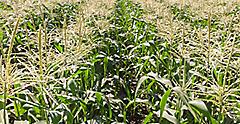
Like most successful civilizations, the Mayan people were a nation of farmers. Agriculture provided food for their families and a commodity to trade with other peoples. The Mayans are universally renowned by modern historians for developing technology far beyond their time. Mayan farmers dutifully created neat terraces on the side of volcanic mountains, working hard to reclaim land from the forests and raise fields from swamps. They built reservoirs to conserve water and irrigation canals to encourage their crops to grow. And they even went so far as to create fertilizer from the aquatic plants and sediments that naturally occurred in their canals.
They also cultivated beans, squash, and fruit trees, but they valued corn over other grains because crops of corn were typically easy to grow, thriving in dry or wet conditions, and they naturally grew better after being cut down in harvest. Like other staple crops worldwide, corn was high in carbohydrates, which meant energy to the Mayans, and could be stored over long periods without spoiling.
Paleoclimatologists discovered that during the Classic Period of the Maya culture (250 A.D. – 950 A.D.), the region suffered severe droughts and climate change, making the longevity of corn an even more attractive crop to grow. However, recent studies also show their high demand for corn may have depleted the environment, making the area more susceptible to drought.
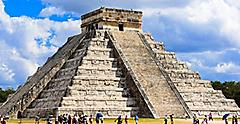
Corn And Ancient Mayan Astronomy
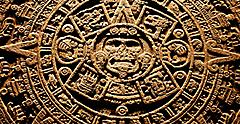
Corn And The Mayan Religion: The Maize God
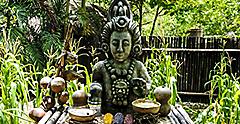
The Popol Vuh is a sacred text written by the Mayans that details the origin of humankind. It tells a story that the gods first tried to form humans out of mud and then out of wood. When those two attempts failed, they created the first human from a dough of yellow and white corn — and thus their complex and reverent relationship with corn began.
To the Maya, gods represent nature, society, and various professions. Mayan culture spoke of a god called Hun Hunahpuis, the Mayan god of Maize. It's believed that the Mayan maize god was decapitated during harvest time and reborn at the start of the next growing season, so he not only represented corn, but he represented the cycle of seasons and the promise of a new harvest each year. The Maya performed rituals to the god at various stages of corn growth, especially during periods of drought. While there's no record of human sacrifice to this god, there were "bloodletting" sacrifices where nobles pierced their skin to smear blood on a statue to ensure the new crop.
The Importance Of Corn In Mexico Today

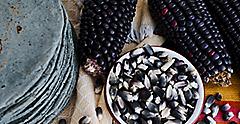
Authentic Mexican corn has a delicious, rich flavor. If you find yourself in Mexico City, head to the tortilleria called Maizajo to see what heirloom corn looks like and pick up a stack of chips, tortillas, tostadas, and more. This rustic store is helping to preserve Mexican heritage for future generations by preserving lesser-known species of corn that are in danger of going extinct. You can taste Maizajo's produce at over 70 restaurants in Mexico City, too.
To Mexicans, corn is "the food with which the gods chose to feed mankind." Thanks to those ancient Mayan farmers, you'll find corn on the dinner tables of every Mexican family and in every meal in Mexico.





